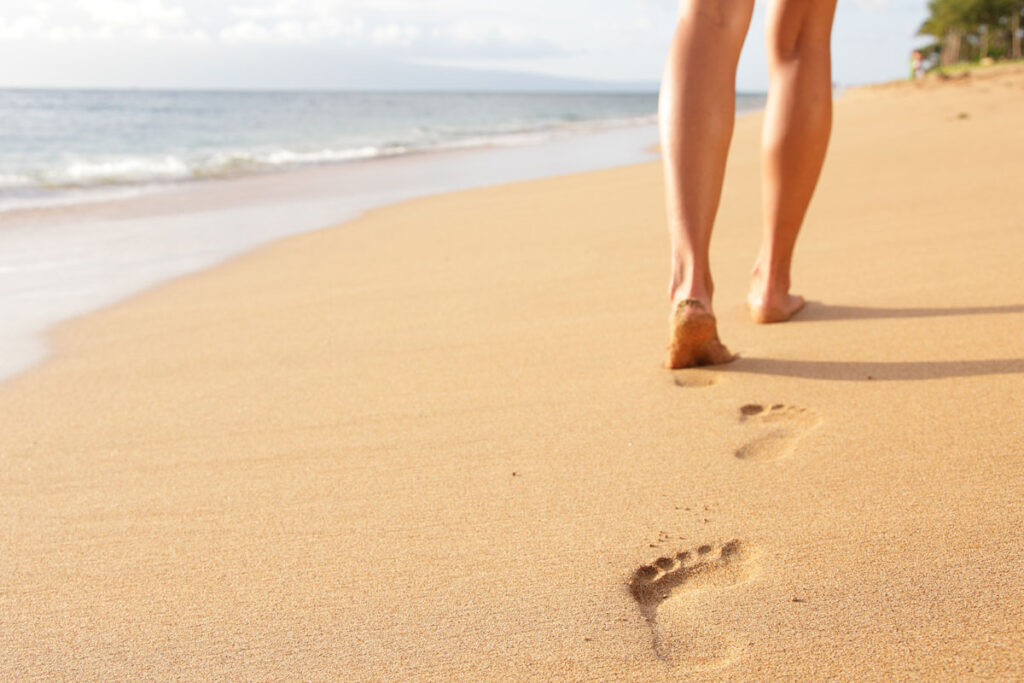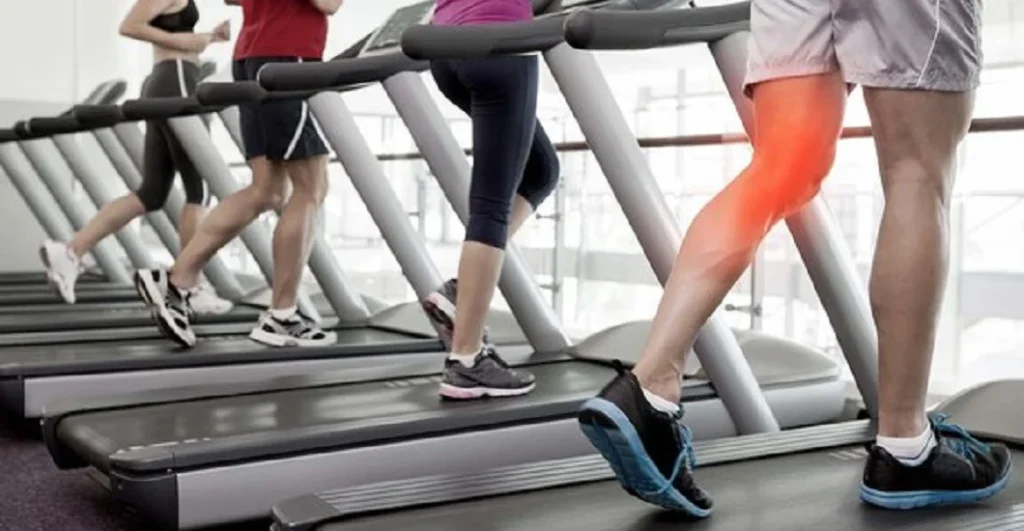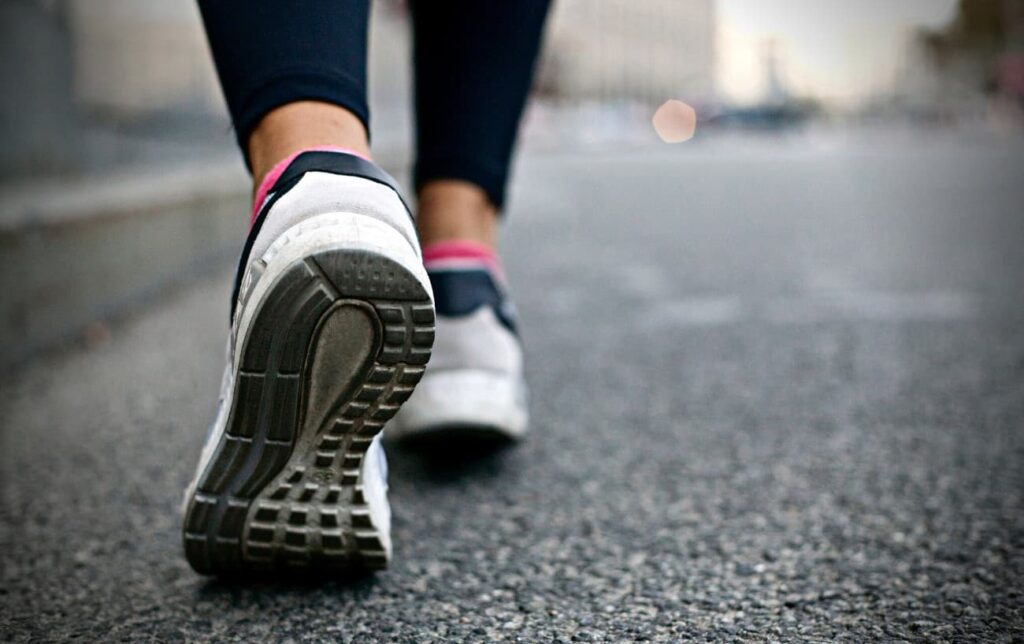Walking is a wonderful way to stay active and keep fit, but have you ever wondered what the best surface is for this enjoyable activity? Whether you prefer strolling on a sandy beach, walking on a soft grassy field, or pounding the pavement of a concrete sidewalk, the choice of surface can greatly impact your walking experience. In this article, we will explore the different surfaces available and uncover which one is the ultimate winner when it comes to walking. So lace up your shoes, step outside, and let’s find out what surface is the best companion for your walking adventures.
Hard Surfaces
Concrete
Concrete is a commonly used hard surface for walking, especially in urban areas. It is durable and can withstand heavy foot traffic. Concrete provides a consistent surface, making it easy to maintain a steady walking pace. Additionally, it is widely accessible and can be found in a variety of locations, such as sidewalks, parking lots, and city streets.
Asphalt
Similar to concrete, asphalt is another popular hard surface for walking. It is commonly used for roads and some sidewalks. Asphalt offers a smooth and even surface, which is beneficial for maintaining a steady, rhythmic walking pace. It is also relatively durable and can withstand the weight and impact of foot traffic.
Paved Paths
Paved paths are specifically designed for walking and can be found in parks, recreational areas, and some urban spaces. These paths are typically made of concrete or asphalt, providing a firm and stable surface. Paved paths offer the benefits of both concrete and asphalt surfaces, including durability, consistency, and accessibility. They provide designated areas for walking, ensuring the safety and comfort of pedestrians.
Natural Surfaces
Grass
Walking on grass can be a pleasant and rejuvenating experience. The softness and natural cushioning of grass provide shock absorption, reducing the impact on joints and muscles. Walking on grass also offers a sense of connectedness with nature, making it a calming and enjoyable option. However, it is important to note that walking on wet or uneven grass may increase the risk of slips and falls.
Dirt Trails
Dirt trails are a popular choice for nature enthusiasts and avid walkers. These natural surfaces offer variable terrain, which can enhance the walking experience. Walking on dirt trails provides a gentle challenge to the muscles and helps improve balance and stability. However, it is important to be cautious of uneven surfaces and potential hazards such as rocks, tree roots, or loose soil.
Gravel Paths
Gravel paths combine the benefits of natural surfaces with the firmness of hard surfaces. Walking on gravel can provide a good workout for the lower body due to the unevenness of the surface. The small rocks offer some shock absorption, reducing the impact on the joints. However, it is important to wear appropriate footwear to protect the feet from sharp or uncomfortable gravel.
Sand
Walking on sand, such as on a beach, offers a unique challenge to the body. The soft and unstable surface requires more effort to walk on, thus providing a higher level of exercise. Walking on sand can help strengthen the muscles in the feet and ankles. However, it is important to be cautious of potential hazards such as hidden rocks or sudden changes in sand texture.

Indoor Surfaces
Hardwood Floors
Hardwood floors are a common indoor surface found in many homes and buildings. They offer a smooth and consistent surface, which is beneficial for maintaining a steady walking pace. Hardwood floors also provide some shock absorption, reducing the impact on the joints. However, it is important to be cautious of slippery conditions, especially when the floor is wet.
Vinyl Floors
Vinyl floors are often found in commercial settings and are known for their durability and easy maintenance. Walking on vinyl floors provides a consistent surface, making it suitable for maintaining a steady walking pace. Additionally, vinyl floors offer some level of shock absorption, reducing the impact on the joints. However, caution should be exercised on wet vinyl floors to prevent slips and falls.
Rubber Floors
Rubber floors are commonly found in gyms, fitness centers, and indoor sports facilities. Walking on rubber floors provides excellent shock absorption, making it ideal for those looking to minimize impact on their joints. The cushioning effect of rubber also helps reduce the risk of stress injuries. Rubber floors are especially beneficial for individuals with joint conditions or those recovering from injuries.
Carpet
Walking on carpet can provide a soft and comfortable experience, especially for those seeking a low-impact activity. The cushioning effect of carpet offers excellent shock absorption, making it suitable for individuals with joint pain or injuries. However, it is important to be cautious of potential tripping hazards, such as loose carpeting or uneven surfaces.
Benefits of Walking on Hard Surfaces
Durability
Hard surfaces such as concrete and asphalt are known for their durability. They can withstand heavy foot traffic and are less prone to wear and tear compared to natural surfaces. This makes them ideal for walking, as they offer long-lasting and reliable walking surfaces that require minimal maintenance.
Consistency
Hard surfaces provide a consistent walking experience. The evenness and smoothness of hard surfaces allow for a steady walking pace, making it easier to maintain a desired speed or rhythm. This consistency can be beneficial for individuals who prefer a controlled and predictable walking environment.
Accessibility
Hard surfaces are widely accessible and can be found in various locations, including sidewalks, streets, and paved paths. This makes it convenient for individuals to incorporate walking into their daily routine. The availability of hard surfaces ensures that people can easily find suitable areas for walking, regardless of their location or surroundings.

Drawbacks of Walking on Hard Surfaces
Impact on Joints
One of the main drawbacks of walking on hard surfaces is the impact it can have on joints, particularly in the lower body. The lack of shock absorption in hard surfaces means that the joints, including the knees and ankles, bear the brunt of the impact from each step. Over time, this repetitive impact can lead to joint discomfort or even injury.
Lack of Shock Absorption
Hard surfaces, like concrete and asphalt, offer little to no shock absorption. This means that the impact from each step is directly transmitted to the body. Without adequate shock absorption, the musculoskeletal system may experience increased stress, leading to discomfort and potential long-term issues.
Increased Risk of Stress Injuries
Walking on hard surfaces without sufficient shock absorption can increase the risk of stress injuries. Stress injuries occur when the muscles, tendons, or bones are subjected to repetitive stress without enough time to recover. Common stress injuries associated with walking on hard surfaces include stress fractures, shin splints, or tendonitis.
Benefits of Walking on Natural Surfaces
Shock Absorption
Natural surfaces, such as grass, dirt trails, gravel paths, and sand, provide excellent shock absorption. The softness and unevenness of these surfaces help reduce the impact on joints, muscles, and bones. This makes walking on natural surfaces particularly beneficial for individuals with joint conditions or those looking to minimize impact on their bodies.
Connectedness with Nature
Walking on natural surfaces offers a unique opportunity to connect with nature. The peacefulness and tranquility of natural environments can have a positive impact on mental well-being. Walking amidst greenery or along a scenic trail can provide a sense of relaxation and rejuvenation, making the overall walking experience more enjoyable.
Variable Terrain
Natural surfaces offer variable terrain, which can enhance the walking experience. Walking on uneven surfaces requires the body to engage different muscles, promoting balance, stability, and overall body strength. The variability of natural surfaces adds an element of challenge to the walking routine, helping individuals improve their fitness levels.
Less Impact on Joints
The shock-absorbing properties of natural surfaces result in less impact on the joints. This can be especially beneficial for individuals with joint pain, arthritis, or those recovering from injuries. By reducing the stress on the joints, walking on natural surfaces provides a low-impact exercise option that helps maintain joint health and mobility.

Drawbacks of Walking on Natural Surfaces
Uneven Surface
One significant drawback of walking on natural surfaces is the unevenness of the terrain. This can pose a challenge, especially for individuals with balance issues or those prone to tripping and falling. It is important to exercise caution when traversing uneven surfaces, such as dirt trails or grassy fields, to minimize the risk of accidents.
Potential Hazards
Natural surfaces may present potential hazards that need to be considered when walking. This includes obstacles such as rocks, tree roots, branches, or slippery leaves. It is advisable to be mindful of these hazards and take appropriate precautions, such as wearing suitable footwear and staying alert to the surroundings.
Weather Dependency
Walking on natural surfaces is often dependent on weather conditions. Rain or snow can make grassy areas muddy and slippery, while extreme heat may make sandy surfaces uncomfortable or challenging to walk on. It is important to take weather conditions into account when considering the best walking surface, as it may impact safety and overall walking experience.
Benefits of Walking on Indoor Surfaces
Consistency of Surface
Indoor surfaces such as hardwood floors, vinyl floors, and rubber floors provide a consistent walking surface. The evenness and smoothness of these surfaces allow for a controlled and predictable walking experience. This is particularly advantageous for individuals who prefer a steady walking environment or those aiming to maintain a specific walking pace.
Shock Absorption
Certain indoor surfaces, such as rubber floors and carpet, offer excellent shock absorption. The cushioning effect of these surfaces helps reduce the impact on joints and muscles. This can be especially beneficial for individuals with joint conditions, such as arthritis, or those recovering from injuries, as it minimizes stress on the body.
Climate Control
Walking on indoor surfaces provides the advantage of climate control. Regardless of external weather conditions, indoor surfaces maintain a comfortable temperature and environment. This makes indoor walking suitable for individuals who prefer a controlled climate, where weather fluctuations, such as extreme heat or cold, are not a concern.

Drawbacks of Walking on Indoor Surfaces
Limited Access
Indoor surfaces are often limited to specific locations, such as homes, gyms, or indoor walking tracks. This may result in limited access for individuals who do not have access to these facilities or prefer to walk in outdoor environments. The confined nature of indoor surfaces may restrict the variety and diversity of walking routes.
Potential Slippery Surfaces
Indoor surfaces, especially when wet or polished, can become slippery, increasing the risk of slips and falls. This is particularly true for hardwood floors and vinyl floors. It is important to exercise caution and be mindful of potential slippery conditions, such as wet surfaces or recently cleaned floors, to prevent accidents or injuries.
Lack of Variation
Unlike outdoor surfaces, indoor surfaces may lack variation in terrain and scenery. The controlled and consistent nature of indoor walking may limit the sensory experience, as it does not offer the same level of stimulation as walking in natural or urban environments. This lack of variation may be less engaging for some individuals or those seeking a more dynamic walking experience.
Considerations for Choosing the Best Walking Surface
Fitness Goals
When choosing the best walking surface, it is important to consider your fitness goals. Different surfaces offer varying levels of challenge and impact on the body. If your goal is to engage in a low-impact activity or recover from an injury, natural or indoor surfaces with good shock absorption may be more suitable. On the other hand, if you are looking for a moderate to high-intensity workout, hard surfaces may provide a more challenging option.
Environmental Factors
Environmental factors, such as weather conditions and accessibility, should also be taken into account. Outdoor surfaces may be weather-dependent, with some surfaces becoming slippery or challenging to walk on during certain weather conditions. Additionally, access to different surfaces may vary depending on location, making it necessary to consider the availability of suitable walking areas.
Health Conditions
Individuals with specific health conditions, such as joint pain or arthritis, may require surfaces with good shock absorption to reduce the impact on their bodies. On the other hand, those looking to improve balance and stability may benefit from walking on uneven natural surfaces. It is important to consult with a healthcare professional to determine the best walking surface based on individual health needs.
Personal Preferences
Last but not least, personal preferences play a significant role in choosing the best walking surface. Some individuals may enjoy the tranquility and connection with nature that natural surfaces offer, while others may prefer the controlled and predictable nature of indoor surfaces. Consider what environment makes you feel comfortable, motivated, and engaged to ensure a more enjoyable walking experience.
In conclusion, the best surface for walking depends on various factors, including individual preferences, fitness goals, environmental factors, and health conditions. Each type of surface offers its own advantages and drawbacks. Hard surfaces provide durability, consistency, and accessibility, but may impact the joints and lack shock absorption. Natural surfaces offer shock absorption, connectedness with nature, and variable terrain, but can be uneven and dependent on weather conditions. Indoor surfaces provide consistency, shock absorption, and climate control, but may have limited access and lack variation. By considering these factors, you can choose the walking surface that best suits your needs and preferences, ensuring a safe, enjoyable, and effective walking experience.






